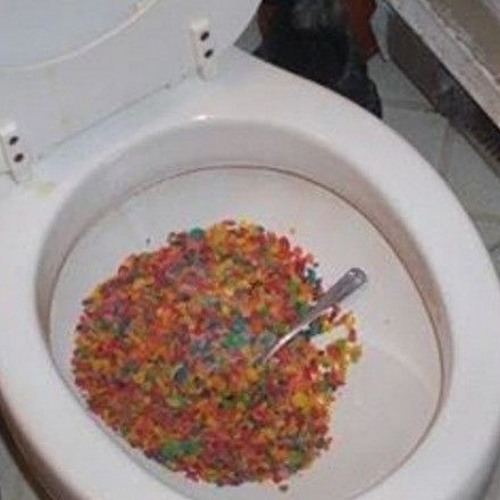Are You Able to Flush Food in the Toilet?
Are You Able to Flush Food in the Toilet?
Blog Article
Right here down the page you might get a bunch of excellent ideas in relation to What Can Happen If You Flush Food Down the Toilet?.

Introduction
Lots of people are frequently faced with the dilemma of what to do with food waste, especially when it concerns leftovers or scraps. One common concern that occurs is whether it's alright to purge food down the toilet. In this post, we'll delve into the reasons that individuals could think about flushing food, the consequences of doing so, and alternative approaches for correct disposal.
Reasons why people may take into consideration flushing food
Absence of awareness
Some individuals might not recognize the prospective damage brought on by purging food down the commode. They may erroneously think that it's a safe technique.
Convenience
Flushing food down the toilet may feel like a quick and simple solution to getting rid of unwanted scraps, particularly when there's no close-by trash can readily available.
Negligence
Sometimes, individuals might just choose to flush food out of sheer negligence, without thinking about the repercussions of their activities.
Consequences of flushing food down the bathroom
Ecological impact
Food waste that winds up in rivers can add to pollution and harm marine communities. Additionally, the water utilized to purge food can stress water sources.
Plumbing concerns
Purging food can lead to clogged pipes and drains, creating pricey pipes fixings and inconveniences.
Sorts of food that ought to not be flushed
Fibrous foods
Foods with coarse structures such as celery or corn husks can get tangled in pipes and trigger blockages.
Starchy foods
Starchy foods like pasta and rice can absorb water and swell, leading to obstructions in pipelines.
Oils and fats
Greasy foods like bacon or food preparation oils should never be flushed down the toilet as they can strengthen and create blockages.
Proper disposal techniques for food waste
Utilizing a garbage disposal
For homes furnished with waste disposal unit, food scraps can be ground up and flushed through the plumbing system. Nonetheless, not all foods are suitable for disposal in this manner.
Recycling
Certain food packaging materials can be reused, reducing waste and reducing environmental impact.
Composting
Composting is a green means to throw away food waste. Organic materials can be composted and used to enhance dirt for gardening.
The significance of correct waste monitoring
Reducing environmental injury
Appropriate waste administration practices, such as composting and recycling, help decrease contamination and maintain natural resources for future generations.
Shielding pipes systems
By preventing the practice of flushing food down the bathroom, house owners can prevent expensive pipes repair work and keep the integrity of their plumbing systems.
Verdict
To conclude, while it may be tempting to purge food down the commode for benefit, it is very important to comprehend the potential consequences of this action. By adopting proper waste management techniques and throwing away food waste properly, individuals can contribute to healthier plumbing systems and a cleaner environment for all.
FLUSH FOOD DOWN THE TOILET?
FLUSHING FOOD CAN CAUSE BLOCKED DRAINS IN YOUR HOME
All of the plumbing fixtures in your home are connected to the same sewer pipe outside of your home. This outdoor sewer pipe is responsible for transporting all the wastewater from your home to the Council sewer mains. Even small pieces of food that go down the kitchen sink can cause problems for your sewer. It should therefore be obvious that flushing larger bits of food, such as meat, risks a clog in either the toilet itself or the sewer pipes. Flushing greasy food is even more problematic because oil coagulates when it cools, coating the interior lining of your pipes.
THE TOILET IS NOT A BIN
Food isn’t the only thing that people shouldn’t be flushing down the toilet. People use the toilet to dispose of all kinds of things such as tampons, makeup wipes, dental floss, kitty litter and even underwear. Water goes to great lengths to educate residents about the high costs and stress placed on wastewater treatment systems simply from people flushing the wrong stuff down the toilet. It costs taxpayers millions of dollars each year, and homeowners thousands in blocked drain repairs.
FLUSHING FOOD IS A WASTE OF WATER
Flushing food is a waste of our most precious resource - water. In June this year Level 1 water restrictions were introduced to protect water supply from drought conditions. Much of New South Wales continues to be affected by prolonged drought with recent figures revealing up to 97 per cent of the state remains in drought. Depending on whether you have a single or dual flush toilet, every single flush uses between five and 11 litres of water. In the current climate this is a huge amount of water to be wasting on flushing food that should be placed in the bin (or better yet, the compost).
https://www.jabplumbingsolutions.com.au/blog/can-you-flush-food-down-the-toilet

Do you like more info about ? Place a remark directly below. We would be glad to know your reactions about this post. In hopes that you come back again soon. Those who appreciated our page kindly remember to pass it around. I take joy in reading our article about What Can Happen If You Flush Food Down the Toilet?.
Go Deal Now Report this page